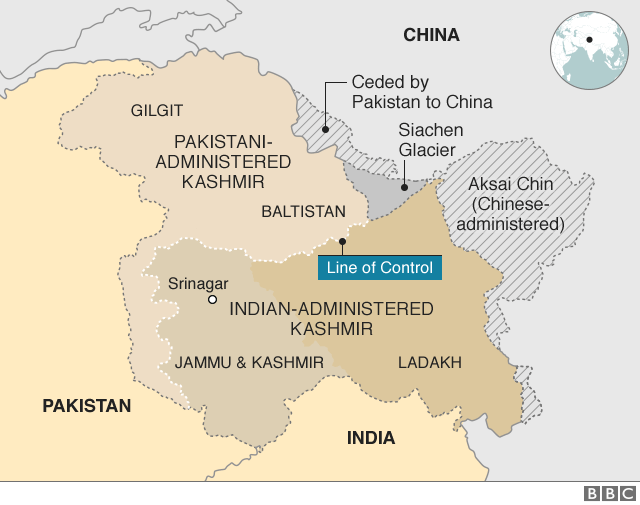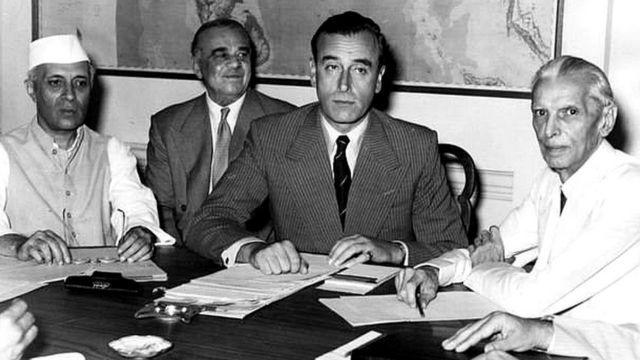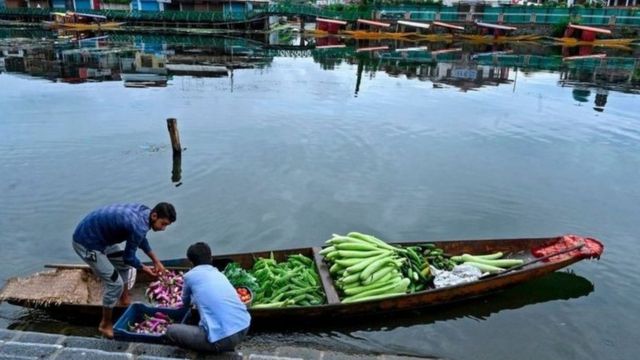The mountainous region of Kashmir has been a flashpoint between India and Pakistan for more than 50 years. BBC News Online provides a step-by-step guide to the dispute. Why is Kashmir disputed?
The territory of Kashmir was hotly contested even before India and Pakistan won their independence from Britain in August 1947. Under the partition plan provided by the Indian Independence Act of 1947, Kashmir was free to accede to India or Pakistan. The Maharaja, Hari Singh, wanted to stay independent but eventually decided to accede to India, signing over key powers to the Indian government - in return for military aid and a promised referendum. Since then, the territory has been the flashpoint for two of the three India-Pakistan wars: the first in 1947-8, the second in 1965. In 1999, India fought a brief but bitter conflict with Pakistani-backed forces who had infiltrated Indian-controlled territory in the Kargil area. In addition to the rival claims of Delhi and Islamabad to the territory, there has been a growing and often violent separatist movement against Indian rule in Kashmir since 1989. What are the rival claims? Islamabad says Kashmir should have become part of Pakistan in 1947, because Muslims are in the majority in the region. Pakistan also argues that Kashmiris should be allowed to vote in a referendum on their future, following numerous UN resolutions on the issue. Delhi, however, does not want international debate on the issue, arguing that the Simla Agreement of 1972 provided for a resolution through bilateral talks. India points to the Instrument of Accession signed in October 1947 by the Maharaja, Hari Singh. Both India and Pakistan reject the option of Kashmir becoming an independent state. How dangerous is the Kashmir dispute? It is potentially one of the most dangerous disputes in the world and in the worst-case scenario could trigger a nuclear conflict. In 1998 India and Pakistan both declared themselves to be nuclear powers with a string of nuclear tests. In 2002 there was a huge deployment of troops on both sides of the border as India reacted to an armed attack on the national parliament in Delhi the previous December. Tension between the two countries has rarely been so high. India said the attack was carried out by Pakistani-based militants assisted by the Pakistan government - a charge always denied by Pakistan. For much of the last two decades, separatist militancy and cross-border firing between the Indian and Pakistani armies has left a death toll running into tens of thousands and a population traumatised by fighting and fear. Are there grounds to hope the Kashmir dispute can be resolved? Recent years have seen a big thaw in relations between India and Pakistan. In addition to holding more talks, they have taken several Kashmir-specific confidence building measures. A bus service between the two parts of Kashmir was resumed in 2005.
In October 2008 an old trade road was reopened after 60 years across the Line of Control (LoC) that divides Indian and Pakistani-administered Kashmir. Earlier in the same month a rail service was introduced. The two governments have huge international backing to continue the peace process and make their ongoing negotiations succeed. An end to the violence and uncertainty in Kashmir would also be widely welcomed in India and Pakistan - and not only by those weary of the fighting or those who see it as a hindrance to the economic development of the South Asia region. However, a diplomatic solution has escaped both sides for more than 60 years, and there are no signs of any new proposals yet. Furthermore, both governments face powerful hard line groups within their own countries who will be carefully monitoring the talks to make sure concessions they deem to be unacceptable are not offered to the other side. Who are the militants? Since the insurgency began in 1989, the number of armed Muslim separatists grew from hundreds to thousands. However their numbers have dwindled over the past two years. The most prominent militant group are the pro-Pakistani Hizbul Mujahideen. Islamabad denies providing them and others with logistical and material support.
The Jammu and Kashmir Liberation Front (JKLF) was the largest pro-independence militant group but it gave up the armed struggle in 1994 and has since been active on the political front. Its influence is thought to have waned. Other former militant groups have joined the umbrella of the All-Party Hurriyat (Freedom) Conference (APHC), which campaigns peacefully for an end to India's presence in Kashmir. However the hard line faction of the APHC - as well as several armed militant groups - are demanding a tripartite dialogue among Indian, Pakistan and Kashmiri representatives - but India has so far not agreed to this. The moderate faction of the APHC, led by Mirwaiz Umar Farooq, opened bilateral talks with the Indian government in 2004. But they have complained that Delhi has not taken steps it promised to create a conducive atmosphere for dialogue - such as the release of prisoners and the withdrawal of the laws that give sweeping powers to the armed forces. Talks between the two sides last took place in early 2006. Is religion an issue? Religion is an important aspect of the dispute. Partition in 1947 gave India's Muslims a state of their own: Pakistan. So a common faith underpins Pakistan's claims to Kashmir, where many areas are Muslim-dominated. The population of the Indian-administered state of Jammu and Kashmir is over 60% Muslim, making it the only state within India where Muslims are in the majority. What is the Line of Control? A demarcation line was originally established in January 1949 as a ceasefire line, following the end of the first Kashmir war. In July 1972, after a second conflict, the Line of Control (LoC) was re-established under the terms of the Simla Agreement, with minor variations on the earlier boundary. The LoC passes through a mountainous region about 5,000 metres above sea level. The conditions there are so extreme that the bitter cold claims more lives than the sporadic military skirmishes.
North of the LoC, the rival forces have been entrenched on the Siachen glacier (more than 6,000 metres above sea level) since 1984 - the highest battlefield on earth. The LoC divides Kashmir on an almost two-to-one basis: Indian-administered Kashmir to the east and south (population about nine million), which falls into the Indian-controlled state of Jammu and Kashmir; and Pakistani-administered Kashmir to the north and west (population about three million), which is labelled by Pakistan as "Azad" (Free) Kashmir. China also controls a small portion of Kashmir. What's the UN involvement? The UN has maintained a presence in the disputed area since 1949. Currently, the LoC is monitored by the UN Military Observer Group in India and Pakistan (Unmogip). So what of the future? In Indian-administered Kashmir, many people are wary of confidence building measures (CBMs) which they fear may be used as a ploy to convert the LoC into a permanent border. Indian Prime Minister Manmohan Singh has reiterated that Kashmir's borders cannot be redrawn, but they can be made "irrelevant". The Pakistani and Indian armies are for the most part observing a ceasefire along the LoC . In what seemed like a major break from its position over the Kashmir question in 2008, Pakistan's new President, Asif Ali Zardari, denounced separatist violence as "terrorism". However, his spokesperson later clarified that the remark was about non-Kashmiri militants fighting in Kashmir. Even so there has overall been a huge decline in violence in Indian-administered Kashmir over the past three years. The main exception to that has been the events of the summer of 2008, when the government of Indian-administered Kashmir decided to transfer to a Hindu religious trust 100 acres of land on a mountain route leading to an important shrine. This sparked widespread protests among Muslims in the valley throughout June, in which many civilians were killed. The decision was then rescinded in early July, which in turn triggered large-scale protests in the Hindu-majority districts around the city of Jammu. The incident provided a good example of how volatile this beautiful part of the world can be - and how the capacity for violence is never far away. |

























No comments
Post a Comment